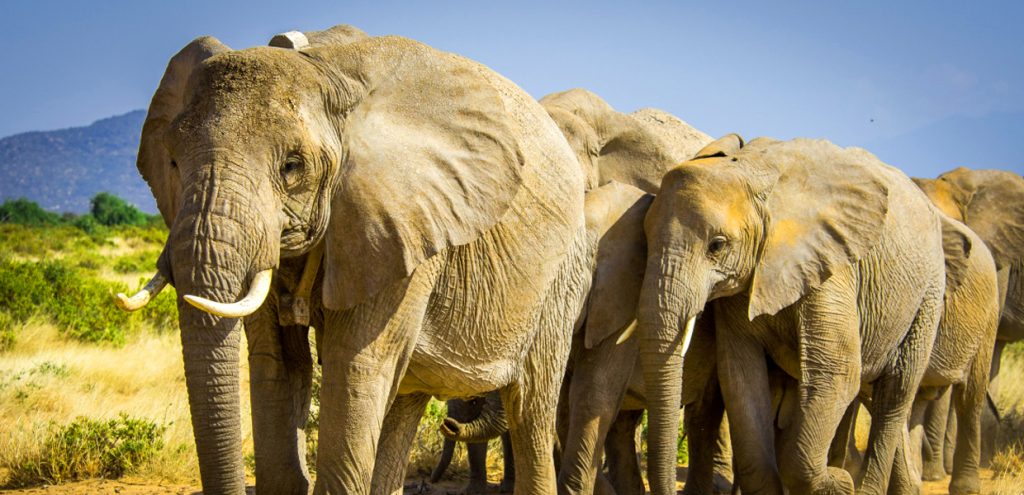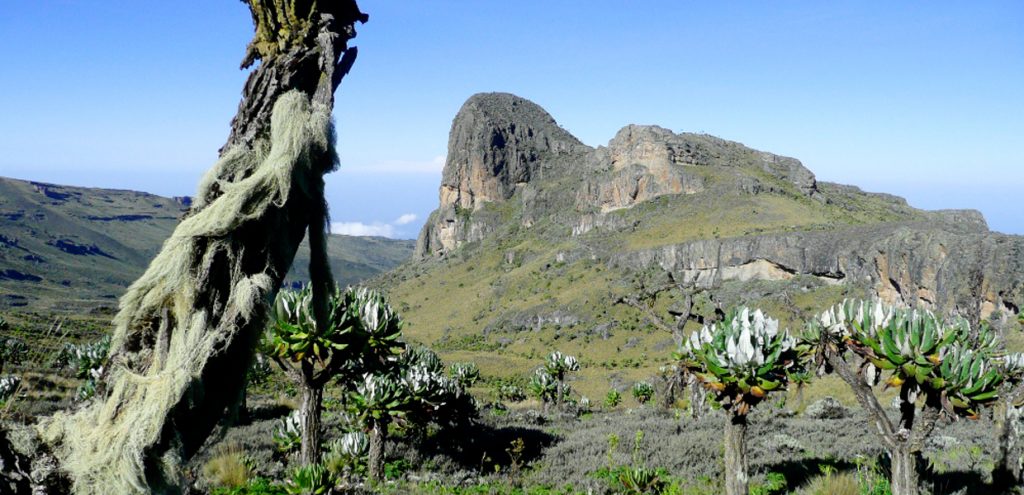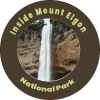There is a variety of Mount Elgon wildlife and vegetation across Mount Elgon National Park and within its boundaries. The varied vegetation cover along the mountain slopes are habitats to savannah elephants, buffaloes, Oribi, Defassa’s waterbucks, duiker, squirrels, spotted hyenas, and a few primates such as and blue colobus monkeys. The park is also home to a variety of small antelopes, leopards and spotted hyenas.

The mountain slopes support a great array of altitudinal vegetation zones that range from the montane forest to the towering open moorland scattered with the huge groundsel plus lobelia. While ascending Mount Elgon’s enchanting slopes, you will pass through a dense montane forest and mixed bamboo belts teeming with birdlife. You will then enter the fascinating heath and moorland zones containing several interesting endemic plant species such as giant lobelia and groundsels.
Wildlife enthusiasts will be pleased to spot primates such as the black and white colobus monkeys, blue monkeys, and hundreds of fascinating bird species, including the golden winged and tacazze sunbirds, Ross’s and Hartlaubs turacos, black and white casqued and crowned hornbills. Don’t miss the endangered Lammergeier and the Jackson’s Francolin which are found nowhere else in Uganda. If you are particularly observant, you can also see buffaloes, duiker, hyenas or even the elusive leopards.
Vegetation Flora and Fauna:

Mountain Elgon is an enormous watershed, and its slopes support a rich diversity of altitudinal vegetation areas that range from the lush Montana. The mixed bamboo-belt forest to the intriguing high open moorland, dotted with the really uncommon worldly plant species such as the large lobelia plus the groundsel plants unusual to Africa. The thick shrubs and luminous wild eternal flowers are another major attraction to enjoy on your Mountain Elgon safari in Uganda.
All this diversity in vegetation provides habitats for various species of wildlife and birds.
Mount Elgon National Park both on either side of the Kenya-Uganda border together with a an adjoining forest reserve and natural reserve combine to form a trans-boundary nature conservation area of about 2,229 sqkm. UNESCO declared this area as a Man and Biosphere reserve. The Uganda part of the park was gazetted in 1992.
The diverse terrain and dramatic ascents of altitude combined with the vagaries of rainfall and weather produce four distinct vegetation zones on Mount Elgon. They include:-
The Lush Montane Forest (2,000m – 2,500m): The forest is of the dry, highland evergreen type and includes over 100 species as well as epiphytic orchids, ferns and trailing lianas. The best place to see this type of forest is on the Chelulus circuit.
Mixed Bamboo and Podocapus Zone (3 000m – 3,500m): Together with the forest contain the highest biodiversity on the mountain.
Heath Zone (3,000m – 3,500m): is characterized by dense scrub and brilliant wildflowers
Moorland Zone (3,500m – 4,321m): Boasts of the highest number of endemic plants species on the mountain. The open moorland grassland is dotted with clusters of peculiar Giant grounded plus Lobelia plants which are unique to East Africa
More About Mount Elgon Wildlife and Vegetation
Mount Elgon’s slopes support a rich variety of Mount Elgon wildlife and vegetation ranging from montane forest to high open moorland studded with the giant lobelia and groundsel plants.
The vegetation varies with altitude, so the mountain slopes are covered with olive Olea hochstetteri and Aningueria adolfi-friedericii wet montane forest. At higher altitudes, this changes to olive and Podocarpus gracilior forest, and then a Podocarpus and bamboo Arundinaria alpina zone.
Higher still is a Hagenia abyssinica zone and then moorland with heaths Erica arborea and Philippia trimera, tussock grasses such as Agrostis gracilifolia and Festuca pilgeri, herbs such as Alchemilla, Helichrysum, Lobelia, and the giant groundsels Senecio barbatipes and Senecio elgonensis., while the Kenyan part was gazetted in 1968
There is a net descent over your day, but there is some testing short climbs along the way as you pass through some amazing alpine landscape into alpine forest. Finally end up in an amazing rainforest which is other-worldly.
This rainforest feels so much different around the Sasa river. The trees are immense in size and the vines is great fun to try climbing! Some colobus and blue monkeys can be seen swinging way above you in the canopy. The massive Tutum Cave beckons exploration but my tiny head torch is quite useless and you dare not lose sight of the daylight at the entrance when exploring. Cascading over the cave entrance is a beautiful waterfall which proved to be a great shower!
Besides the savannah elephants in Mount Elgon National Park, you can also complement your visit with a visit to Semuliki National Park further west of Uganda to see the dwarf elephants as part of the park’s wildlife. Don’t miss the much more giant African elephants of Queen Elizabeth National Park. Further south west of the country, you can’t afford to miss the lifetime gorilla trekking safari in Bwindi Impenetrable and Mgahinga Gorilla National Parks.
